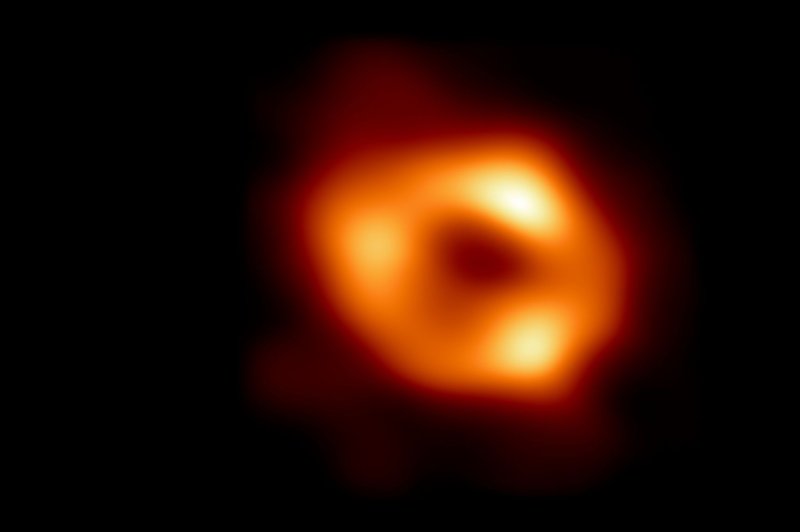The Event Horizon Project on May 12, 2022, released the first image first look at the Milky Way black hole, Sagittarius A*. Researchers on Thursday said they discovered black hole jets from the early universe. File Photo by EHT Collaboration/Twitter
Feb. 7 (UPI) — Researchers said on Thursday that they had discovered twin-lobed radio jets they suspect were formed when the universe was 1.2 billion years old, stretching at least twice the length of the Milky Way galaxy.
Scientists added, however, that the black hole fueling the quasar producing the jets is small compared to other black holes, equaling 450 million suns. The discovery was made by the Gemini North telescope, located in Hawaii.
Funded by the U.S. National Science Foundation and operated by the NSF NOIRLab astronomers, researchers said their observations have gained new insights into when the first jets formed in the universe and how they impacted the evolution of galaxies.
“Interestingly, the quasar powering this massive radio jet does not have an extreme black hole mass compared to other quasars,” said Anniek Gloudemans, team leader and researcher said in a statement.
“This seems to indicate that you don’t necessarily need an exceptionally massive black hole or accretion rate to generate such a powerful jet in the early universe.”
Previously discovered radio jets in the early universe had been attributed to noise from the cosmic microwave background left over from the Big Bang creation of the universe. That background radiation, though, typically lessened with greater distance.
“It’s only because this object is so extreme that we can observe it from Earth, even though it’s really far away,” Gloudemans said. “This object shows what we can discover by combining the power of multiple telescopes that operate at different wavelengths.”
#Researchers #find #largest #black #hole #jet #early #universe













Leave a Reply